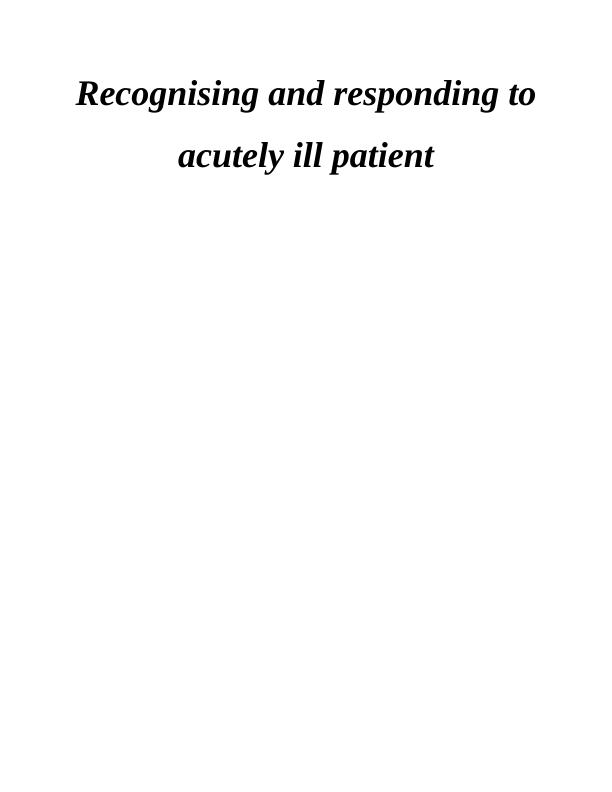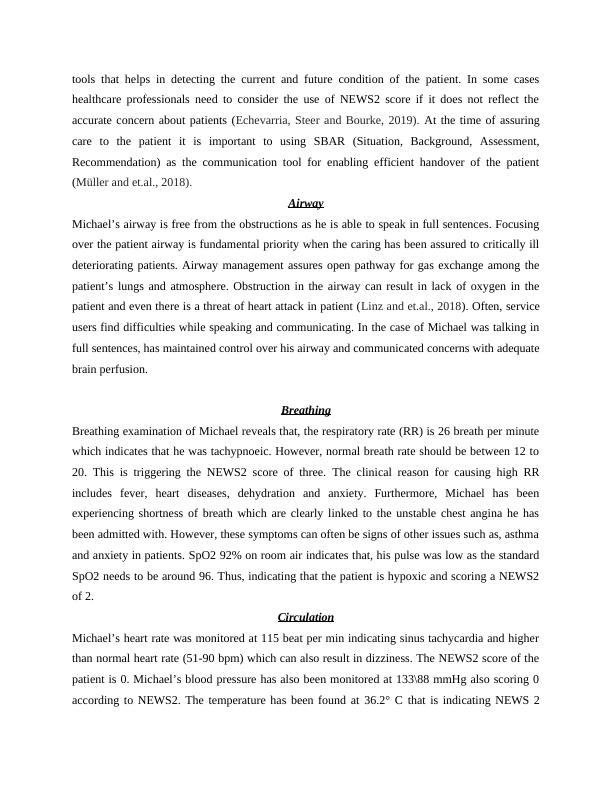Recognising and Responding to Acutely Ill Patient - Desklib
15 Pages5432 Words265 Views
Added on 2023-06-11
About This Document
This documentation discusses the professional nursing competencies required to recognise and respond to acutely ill patients. It includes a case study of Michael Green, the A-E approach, pathophysiology, nursing and medical management, and holistic care. The report also highlights the importance of patient-centred care and the use of tools like NEWS2 and SBAR. Course code, name, and college/university are not mentioned.
Recognising and Responding to Acutely Ill Patient - Desklib
Added on 2023-06-11
ShareRelated Documents
End of preview
Want to access all the pages? Upload your documents or become a member.
Nursing Assignment: Assessment and Management of Patient Condition
|13
|3726
|237
Nursing Case Study Analysis | Report
|11
|2938
|32
Patient suffering from acute chest pain: Partnership and collab
|14
|4804
|68
Nursing Assignment on Deterioration and Wound Management
|18
|4046
|345
Nursing Assignment: DETECT Framework for Patient Deterioration
|13
|3077
|171
Pre-hospital Setting - Nursing Management PDF
|11
|2904
|138




